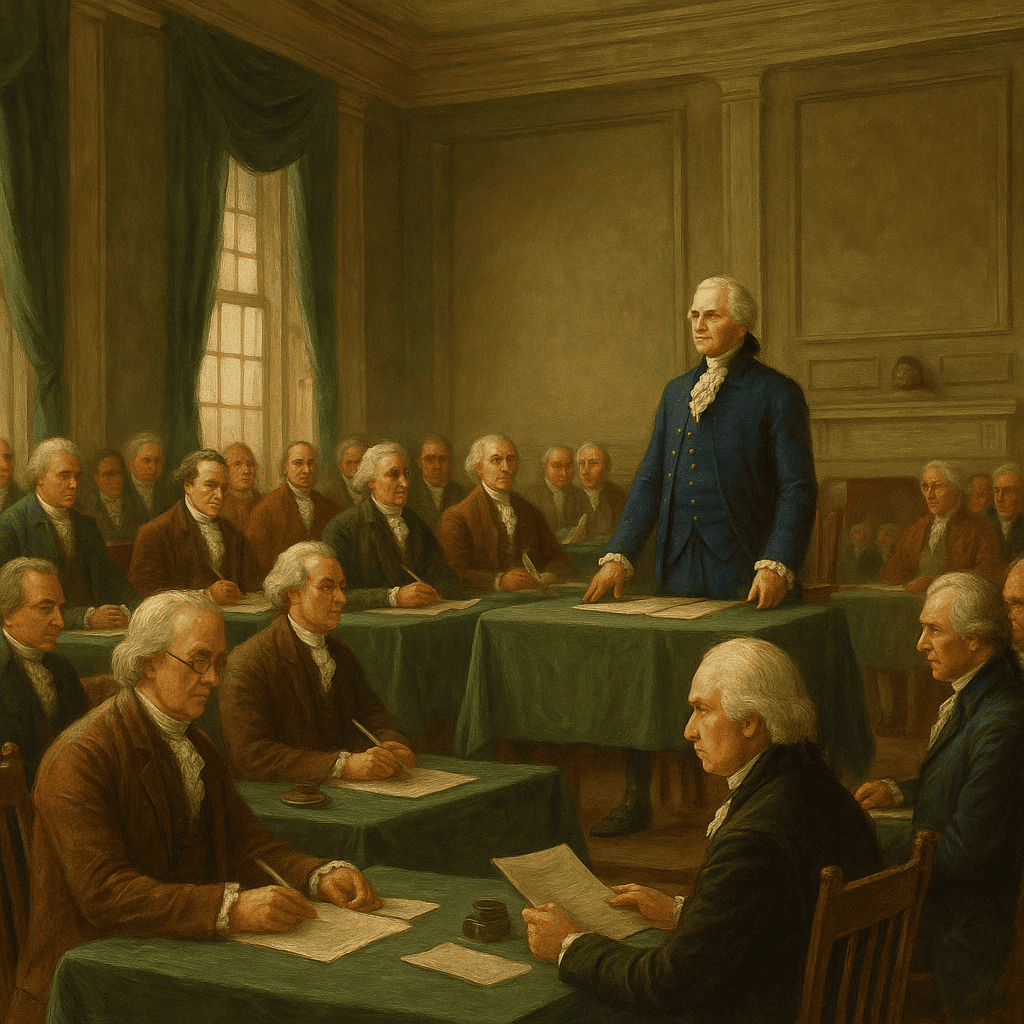On May 25, 1787, delegates from twelve of the thirteen American states gathered at the Pennsylvania State House in Philadelphia—now known as Independence Hall—to begin what would become the Constitutional Convention. Originally convened to revise the faltering Articles of Confederation, the meeting quickly evolved into a historic undertaking: the creation of an entirely new system of government. Over the course of the summer, these delegates would draft the United States Constitution, laying the foundation for the American republic and its democratic institutions.

Following independence from Britain, the United States faced mounting challenges under the Articles of Confederation. The federal government lacked the authority to levy taxes, regulate interstate commerce, or enforce laws effectively. Economic instability, internal unrest—such as Shays’ Rebellion—and growing distrust among the states signaled the urgent need for a stronger, more cohesive national government.
Recognizing the crisis, state leaders called for a convention to amend the Articles. Instead, the delegates—among them George Washington, James Madison, Alexander Hamilton, and Benjamin Franklin—soon determined that a complete overhaul was necessary.
The Constitutional Convention brought together many of the most accomplished political minds of the time. George Washington was unanimously elected to preside over the proceedings, lending the convention both authority and credibility. James Madison, often called the "Father of the Constitution," arrived with a detailed plan for a new government that heavily influenced the resulting document.
While the delegates were united in their desire to strengthen the nation, they held sharply different views on the structure of government, the balance of power, and the role of the states. Through vigorous debate, compromise, and principled negotiation, they crafted a document that balanced liberty with order, federal authority with state sovereignty, and individual rights with collective governance.

The Constitution that emerged from the Convention established a government with three branches—executive, legislative, and judicial—each with distinct powers and checks and balances. It provided for a bicameral legislature, outlined the powers of the president, and set forth mechanisms for amending the document itself.
Signed on September 17, 1787, and ratified by the states in the years that followed, the U.S. Constitution became the supreme law of the land and remains the longest-serving written constitution in the world.

The Constitutional Convention, which began on May 25, 1787, is remembered not only for its outcome but for its process—a testament to the power of debate, compromise, and vision in shaping a nation. The Constitution continues to guide American democracy, offering a framework that has endured through civil wars, social upheavals, and centuries of change.
It stands as both a product of its time and a living document—adaptable, interpretable, and foundational to the ongoing pursuit of a more perfect union.